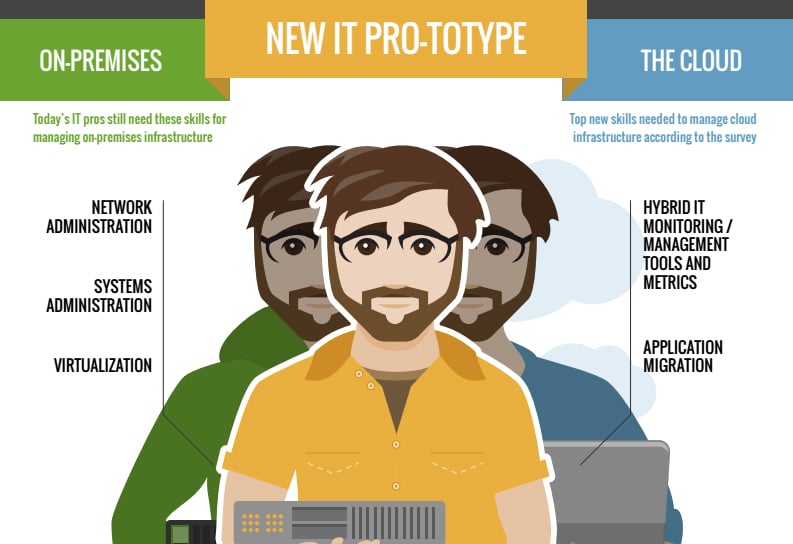SolarWinds has released the findings of its latest IT Trends Report, subtitled The Hybrid IT Evolution. As the subtitle suggests, the report highlights the move of the majority of IT from on-premises-only to a more hybrid environment. The study features insights from IT practitioners, managers and directors in North America, the United Kingdom, Germany, Australia, Brazil and Singapore from public and private sector small, mid-size and enterprise companies.

Cloud technology, especially public cloud, was once looked at as a cost-effective method for running applications albeit one with enough security issues to make most pass on it. This is no longer the case as the cloud is everywhere and being used by almost everyone. The cloud does offer advantages in cost and scale, the adoption of the technology can make IT’s job of ensuring always-on performance a bit trickier. And though there is little reason to believe all workloads will migrate to the cloud, those that are will present some interesting challenges to IT professionals as well.
Key findings include:
- Nearly all (92%) of the IT professionals surveyed say adopting cloud technologies is important to their organizations’ long-term business success; more than a quarter (27%) say it is extremely important.
- Only 43% estimate that half or more of their organizations’ total IT infrastructure will be in the cloud within the next 3-5 years.
- 60% say it is unlikely that all of their organizations’ infrastructure will ever be migrated to the cloud.
- Overall, only 9% say their organizations have not migrated any infrastructure to the cloud.
- The number of small businesses that have not migrated anything to the cloud went from 18% in 2015 to just 6% in 2016.
- The top three hybrid IT benefits by weighted rank are infrastructure cost-reduction, increased infrastructure flexibility/agility and relieving internal IT personnel of day-to-day management of some infrastructure, respectively.
- 62% say that security is the biggest challenge associated with managing current hybrid IT environments.
- The top three barriers to greater cloud adoption by weighted rank are security/compliance concerns, the need to support legacy systems and budget limitations, respectively.
- 69% say they have already migrated applications to the cloud, followed by storage (49%) and databases (33%).
- The top three areas of infrastructure with the highest priority for continued or future migration by weighted rank are applications, databases and storage, respectively.
- Only 27% are certain their IT organizations currently have adequate resources to manage a hybrid IT environment.
- The top five skills needed to better manage hybrid IT environments are hybrid IT monitoring/management tools and metrics (48%), application migration (41%), distributed architectures (32%), service-oriented architectures (31%) and automation/vendor management (tied at 30%).
- 56% indicated they have the level of support needed from leadership and the organization as a whole to develop/improve the skills they feel they need in order to better manage hybrid IT environments.
The reports findings are based off of responses from 257 IT practitioners, managers and directors. The full results are features on SolarWinds IT Trends Index (see link below). Aside from the key findings listed above, the index also lists the benefits, barriers, challenges of migration, and realities of hybrid IT as it is reported by those surveyed.




 Amazon
Amazon